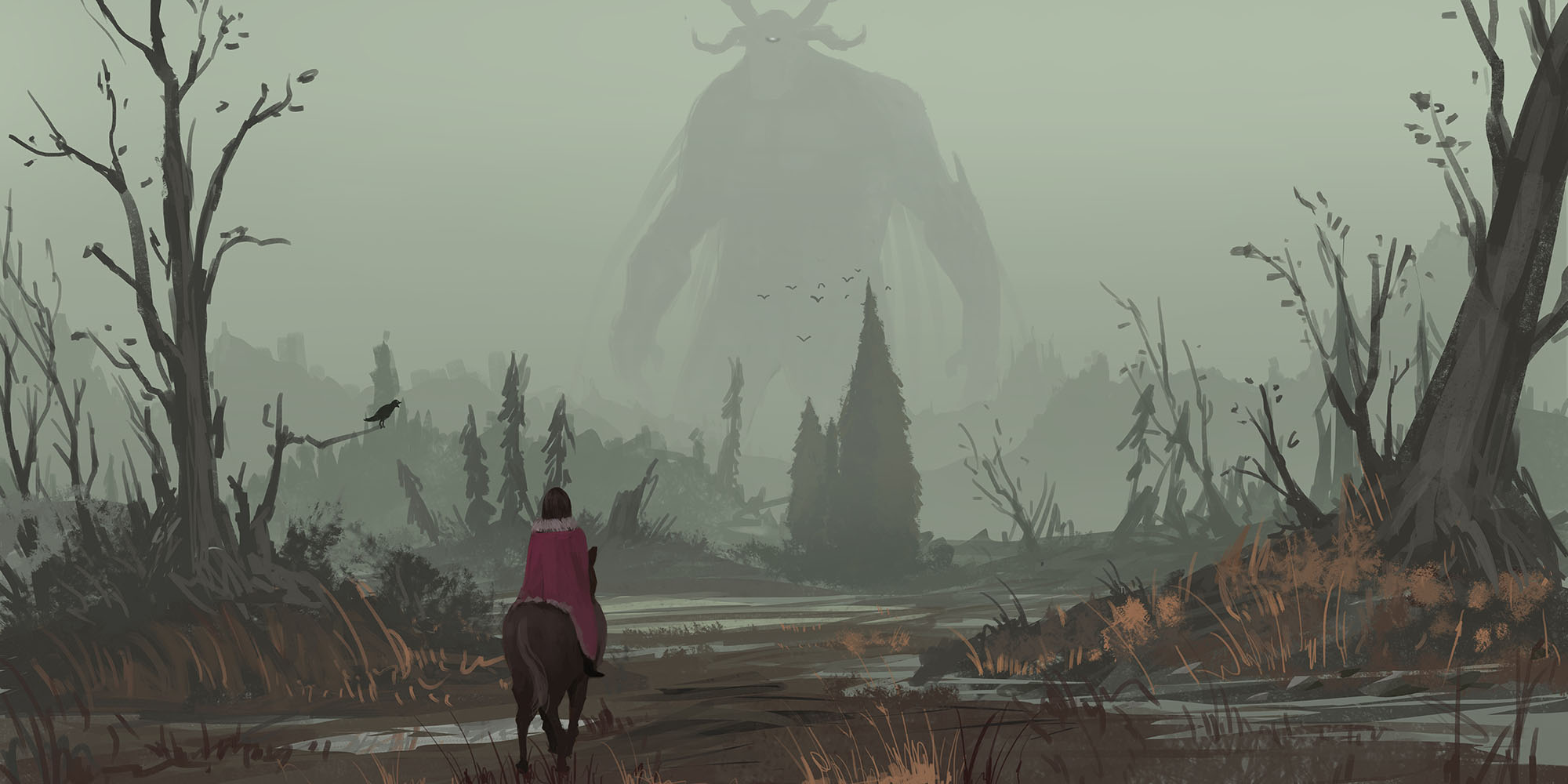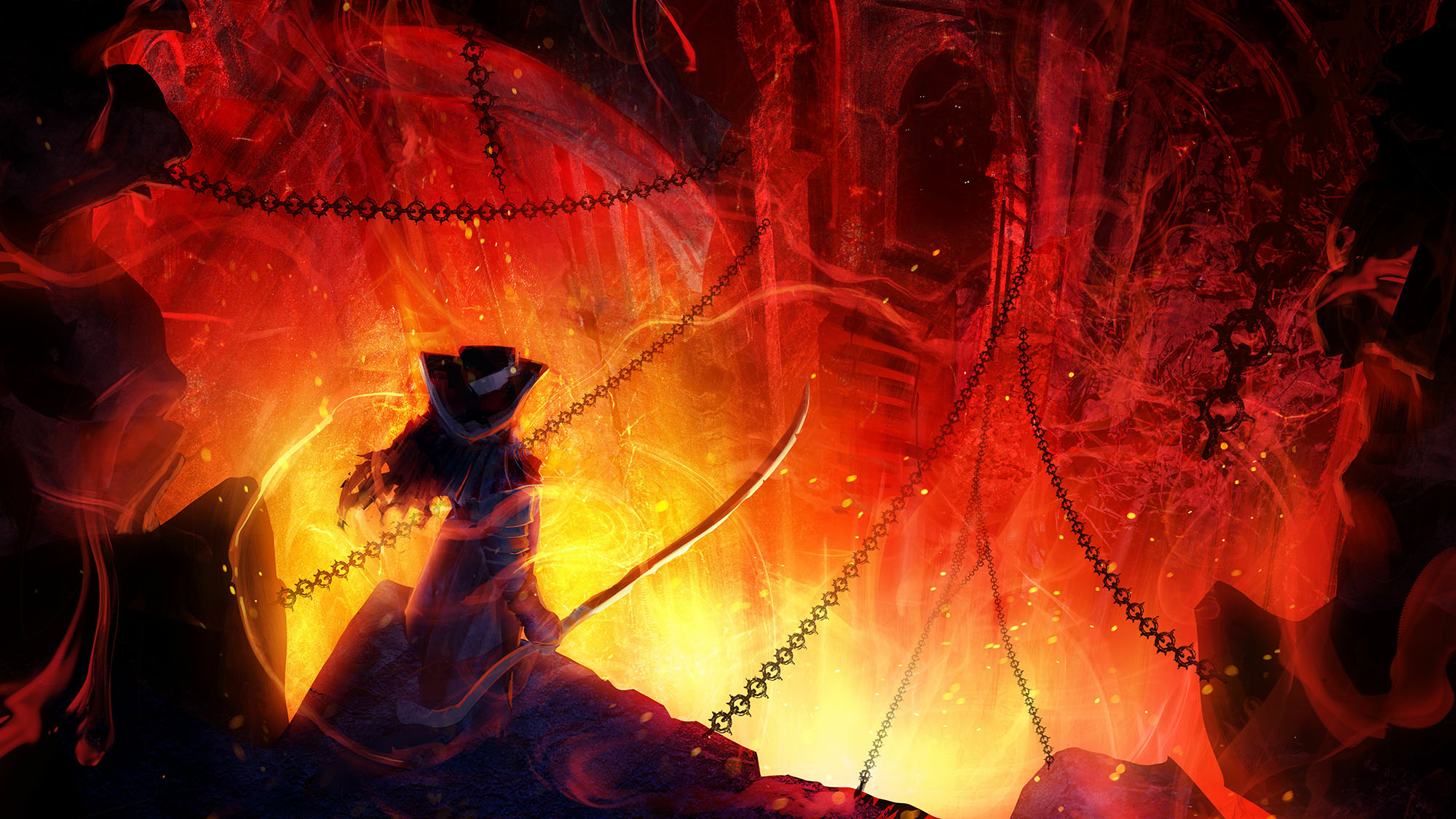The Gardens of Ynn and The Stygian Library are a pair of depthcrawl mini-campaigns by Emmy “Cavegirl” Allen. It would probably be more accurate to describe them as THE depthcrawl mini-campaigns, since the entire depthcrawl concept was invented by Allen for these books.
The Gardens of Ynn came first. A 79-page, PDF-only book with fairly crude productions values, but golden content. The Stygian Library was more or less the sameF, but a 2020 Kickstarter saw this book revamped with gorgeous gothic illustrations and a deluxe printed edition.
INTO THE GARDENS
One day you may find a strange door in a garden. It wasn’t there yesterday. It may not be there tomorrow. But today it looks as if it’s been there for a hundred years, and above it are written the words The Garden of Ynn by way of Whiteoak. Or Hobbiton. Or Waterdeep. Or Bywater-Under-the-Bay.
On the other side of the door is a different garden. A strange and feyish place of glass-roofed mausoleums, singing orchards, and frozen silk-gardens. Haunting these hedgerows are bonsai turtles, giant caterpillars, animated chessmen, and ferocious white apes. And if you choose to go exploring – to go deeper – there are stranger things to be found as the skein of the garden peels back: steam pipes and splicing vats and the vivisection theatre.
LOST IN THE LIBRARY
“Put enough books in one place, and they distort the world.” The Stygian Library is that place between worlds towards which any building stacked high with books (or scrolls or tomes) is bent. Pass between the shelves, explore the chambers of learning, and you may find yourself passing to another realm where the rows of shelves continue without end.
Here there are chained books, silent printing presses, time-locked vaults, and spirit planetariums, all carefully attended by the five Orders of Librarians – Red, Yellow, Black, White, and Grey – who pursue a secret agenda that is somehow related to the spirit tubes and phantom pumps that seem to lace the library’s hidden ways.
Because the Library connects all great stores of knowledge across the multiverse, the answers to almost any question you might ask can be found here… and this is precisely what will lure many into its dusty halls.
WHAT IS A DEPTHCRAWL?
I’ve written up a detailed overview of depthcrawls, but here’s the quickie version: Depthcrawls are a method for procedurally generating an exploration scenario. Each keyed site is created by randomly combining three or four different elements:
- Location
- Detail
- Event
- Encounter
So, for example, in the Stygian Library you might generate:
- Reading Lounge
- Funeral Urns
- Footprints, Litter, Notes, & Other Signs of Passage
- 5 crawling things
These are not, it should be noted, simply enigmatic entries on a random table: Each element is supported by a meaty, play-oriented entry. And so, in this case, I know that the PCs find an assortment of funerary urns arranged around a comfortable room with richly upholstered couches and elegant coffee tables. From several of these urns, there are footprints leading away from them… and as I’ve generated “crawling things” as the encounter, it’s reasonable to intuit that these “foot” prints belong to crawling things which have somehow emerged from the ashes within the urns.
Or perhaps something completely different.
That’s the beautiful alchemy of the depthcrawl: In the process of bringing these disparate elements together (both with each other and with the current circumstances and continuity of the campaign), you – as the GM – will be performing a constant series of creative closures, making every journey into either the Garden of Ynn or the Stygian Library utterly unique. In practice, it very much feels as if you an Allen are engaged in a beautiful dance, your own creative impulses – and those of your players – swirling endlessly with the raw fodder of these setting/adventure books to summon forth something truly magical.
As the PCs journey deeper (into either Garden or Library), their current “depth” serves as a modifier on the random tables, slowly pushing the results towards both greater terrors and terrifying truths.
LIMINAL SPACES
The Gardens of Ynn and The Stygian Library are in some ways completely different from each other, but in many others are clearly cut from the same cloth. Indeed, one might say that they are superficially distinct, but unified by a common soul.
What they most essentially share in common is a fey-ish tone that I would describe as “a somber funhouse.”
Funhouse dungeons are designed like carnival rides: Whatever wild whims seize their GM are thrust together, usually with a wacky or comedic result. Ynn and the Library are built to similar effect, but their sense of the absurd is a deliberate invocation of an inhuman and alien environment beyond mortal ken; it hews true to the spirit of Alice in Wonderland, which seeks enlightenment in madness.
“Don’t look too close,” says the funhouse dungeon. “We’re just here to have fun!”
“Look very close,” says Ynn and the Library. “For what could be more fun than the absurdity of truth?”
WHO CAN VISIT THE GARDENS & LIBRARY?
The Gardens of Ynn and The Stygian Library are OSR products, designed for that vague smear of pre-1985 D&D and/or the many clones and near-clones of those games which have appeared over the last couple decades.
Personally, I ran The Gardens of Ynn for 5th Edition without any great deal of difficulty. The most troublesome bit are the monster stat blocks, but you can achieve a great deal with some simple re-skinning. Honestly, the adventures find such a unique vibe that any GM with moderate experience could probably easily use them in a wide variety of systems and settings with little difficulty: Numenera, Savage Worlds, Monsterhearts, etc.
QUIBBLES
The Gardens of Ynn and the original edition The Stygian Library both list their locations, details, and so forth in the order that they appear on the random tables. In my experience, this made it unnecessarily difficult to find the entries for stuff as I generated it. Someone appears to have figured this out, however, and the revised edition of The Stygian Library alphabetizes everything.
… that’s it for my quibbles.
CONCLUSION
Either or both of these books get my highest recommendation.
I’ve run The Gardens of Ynn several times, including with the Alexandrian Game Club, and it’s been a smashing success every time. I described it as a “beautiful alchemy” above, and that really is the experience of running it at the table. It’s been such a wonderful experience that I’m looking into the possibility of launching an open table with the campaign.
It’s not just the depthcrawl itself, which is a very nifty structure for procedural content generation. It’s Emmy Allen’s crystal-clear creative vision, which effortlessly flows from the page directly into your campaign with soul-searing pathos, innocent whimsy, and a delightfully surprising pulp steampunk.
If you’d like to see what this looks like in practice, I’ve done a video on Twitch demonstrating a simulated run of what using the book looks like from the GM perspective.
Regardless, these are both books you should pick up as soon as your pocketbook allows!
GARDENS OF YNN
Style: 3
Substance: 5
Authors: Emmy “Cavegirl” Allen
Publisher: Dying Stylishly Games
Cost: $5 (PDF)
Page Count: 79
STYGIAN LIBRARY (Revised)
Style: 5
Substance: 5
Authors: Emmy “Cavegirl” Allen
Publisher: SoulMuppet Publishing
Cost: $30 (Physical) / $9 (PDF)
Page Count: 160















